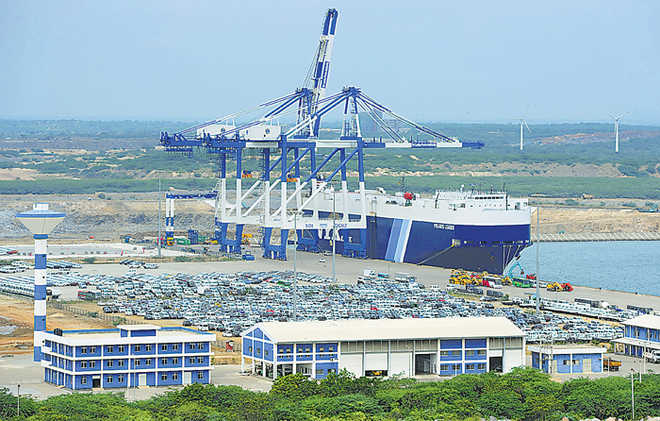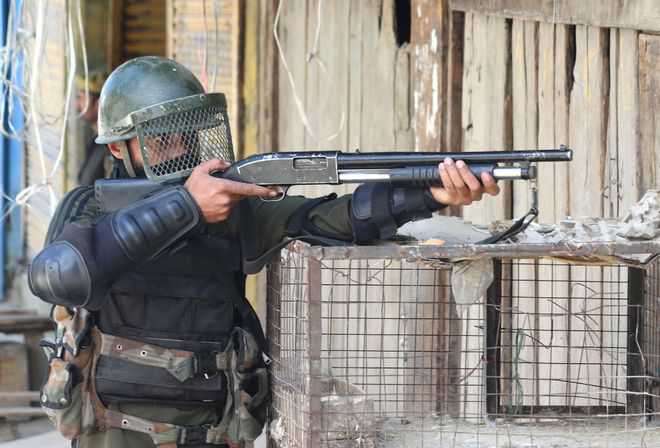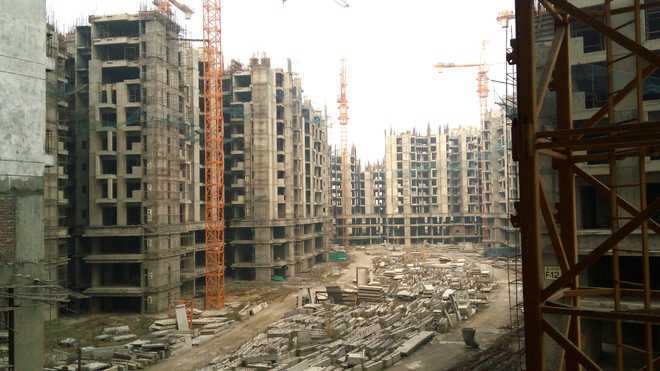
The catch: Sri Lanka has been forced to give China partial ownership of Hambantota.
G Parthasarathy
CHINA’S much-touted “Silk Roads” and “Maritime Silk Routes” trace their origin historically to its trade across Central Asia and the Indian Ocean. Interestingly, silk constituted a relatively small portion of Chinese trade, though it gave an exotic content to what was primarily commercial activity, in which China was the principal beneficiary. The Maritime Silk Route across the Indian Ocean was first set during the course of seven expeditions between 1404 and 1433 by a Chinese naval fleet headed by Admiral Zheng He, a Mongolian Muslim eunuch, appointed by Ming emperor Yongle. During the course of these expeditions to Indonesia, Malaysia, Sri Lanka and Calicut, Zheng brought back kings and princes to “kowtow” (genuflect) before the Ming emperor. Indonesia has ensured that it responds cautiously to Chinese inducements and avoids getting closely drawn into a Chinese embrace. Beijing, however, seems to have drawn Sri Lanka into its spiders’ web, taking advantage of the island’s economic vulnerabilities. One has to recall what Admiral Zheng did to the hapless island-nation after a visit to Calicut in 1406, to “get the Buddha’s tooth relic”. He returned to Sri Lanka in 1411 with a large army to take revenge for an earlier perceived insult. Parts of the island were plundered and the Sri Lankan king, Vira Alakeswara, taken back to Nanjing to kowtow before the emperor, together with the holy relic. The king was replaced by a “malleable” ruler. While the humiliated king was returned to his people a few years later, the relic was returned six centuries later in 1960, by PM Chou en Lai, as a gesture of “goodwill”, Chinese style. Chinese trade was historically as exploitative as trade by the British East India Company! Colombo is, nowadays, full of hoardings of China’s “magnanimity”, manifested in its “assistance” in infrastructure, industrial and construction projects. Beyond the Galle Main Road in Colombo is the $1.4 billion Port City Project to be filled with Chinese built, owned, or managed, luxury apartments, golf course, theme park, hotels and office buildings. All these projects will soon become part of Sri Lanka’s mounting official debt burdens and accentuate the already unbearable debt burden Colombo has accumulated, from earlier Chinese “aid”. The main instruments of this aid and plunder of natural resources are the China Communications Construction Company and its subsidiary, the China Harbour Engineering Company. World Bank has blacklisted both these companies across the world because of their corrupt practices, including bribery. The only well executed and profitable Chinese-built project in Sri Lanka is the Container Terminal in Colombo.Apart from the crushing debt burden of the Colombo Port City Project, Chinese projects located in President Rajapakse’s own constituency, Hambantota, have imposed an unsustainable debt burden on Sri Lanka. Given Western aversion for his regime and Indian doubts about the project’s viability, President Rajapakse welcomed Chinese “assistance” to develop his constituency. He sought and obtained Chinese “support” to heavily finance projects ranging from the Hambantota Port to a power plant, an airport, an industrial park, a cricket stadium and a sports complex. All these investments have proved uneconomical. Hardly any ships visit Hambantota Port, barely one aircraft lands at the airport daily and the sports facilities remain unutilised, even as local opinion was outraged by the proposed construction of an industrial park. Sri Lanka has been spending 90 per cent of government revenues to service debts. Unable to repay its debts to China, Sri Lanka has been forced to convert Chinese investments into equity in Hambantota, giving the Chinese partial ownership of the port. Following discreet Indian expressions of concern, Sri Lanka has retained operational control of the port, ensuring that Chinese submarines and warships do not freely berth there. Some pre-emptive action has also been taken to ensure that the eastern port of Trincomalee does not become the next port of interest for Chinese strategic ambitions, thanks to a timely initiative of Petroleum Minister Dharmendra Pradhan. The Indian Oil Corporation has established a business presence in Sri Lanka for progressive involvement in the use of Trincomalee for import and processing of petroleum products. It is imperative to build on this by constructing a modern petroleum refinery on equitable terms in Trincomalee. China’s Belt and Road Initiative in Myanmar is primarily concentrated on developing the Bay of Bengal port of Kyaukpyu and connecting it to its neighbouring Yunnan province by oil and gas pipelines and road and rail networks. But, Myanmar is wary of overdependence on China, among other reasons, because of Beijing’s insatiable quest for environmentally damaging energy projects and its yearning for access to precious metals and stones. Myanmar may, however, find it difficult to resist Chinese pressures on such projects unless India, Japan, South Korea, the US, the EU and neighbouring ASEAN countries make a coordinated effort to strengthen economic relations with it. A similar approach would be needed to China’s approach to construction projects in Nepal and Bangladesh. China’s “all-weather friend” Pakistan is also facing problems in implementing the much-touted CPEC. Despite high-level meetings, important projects like the Diamer-Bhasha Dam located in Gilgit-Baltistan, in POK, are stalled because of disagreements on financial terms set by the Chinese. There are also differences on implementing the railway projects based out of Peshawar and Karachi, apart from a series of road projects. Moreover, there is very little transfer of technology and knowhow, and minimal local participation in Chinese construction projects. Beijing has, after all, to utilise its vast surplus labour force and construction machinery and materials, abroad as its unprecedented domestic construction projects at home are completed.Questions are now being raised in Pakistan about where resources will come from to repay the over $50 billion debt that will accrue from CPEC projects, where local participation is minimal. Moreover, Pakistan will soon be unable to credibly claim that it exercises its sovereignty in places like the Gwadar Port, which is all set to become a Chinese-run military base, close to the strategic Straits of Hormuz. Writing in the respected Dawn newspaper, columnist Khurram Hussein perceptively observes: “In reality, the China-Pakistan Economic Corridor is about allowing Chinese enterprises to assume dominant positions in all dynamic sectors of Pakistan’s economy, as well as a ‘strategic’ direction that is often hinted at, but never fleshed out.”

























































 AP PHOTO
AP PHOTO


 HT FILE
HT FILE

























































